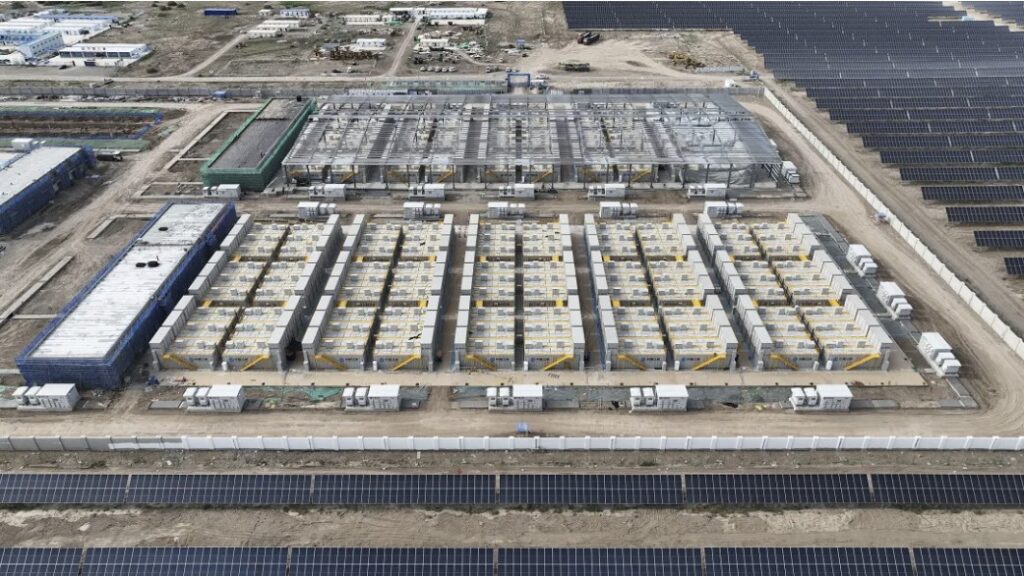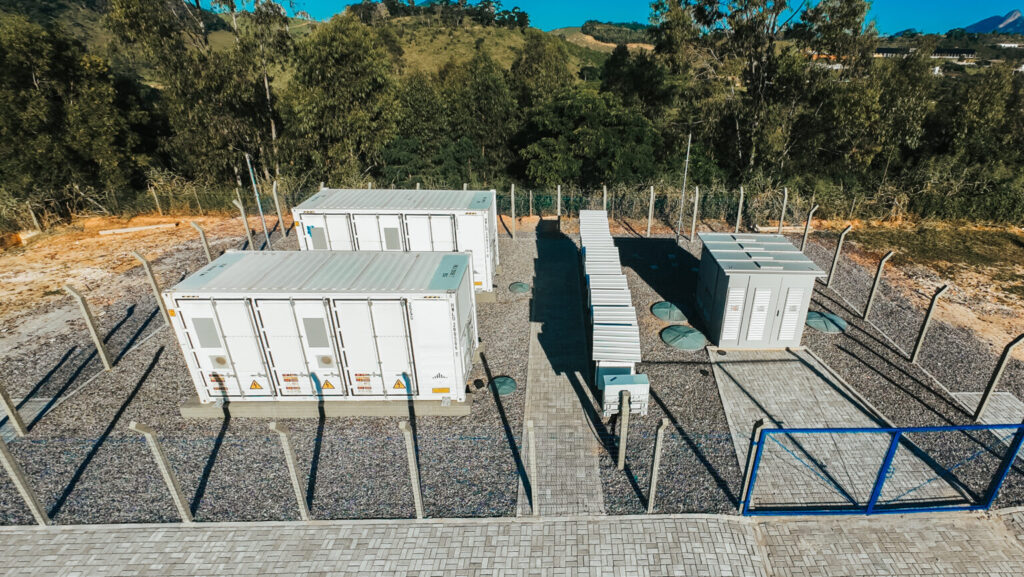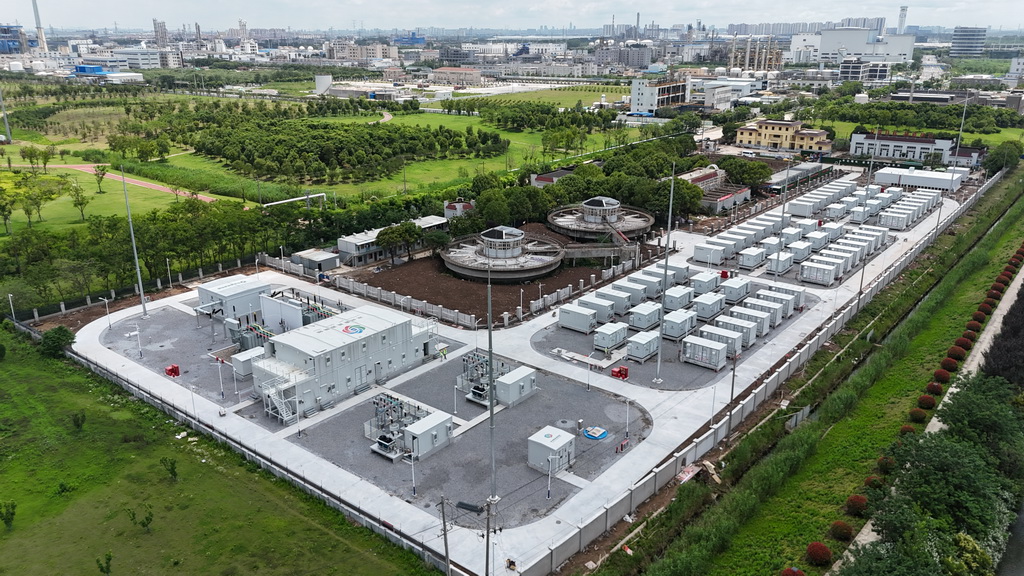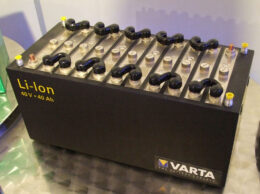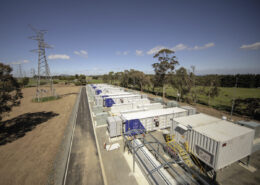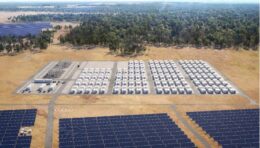Battery storage on a capacity market
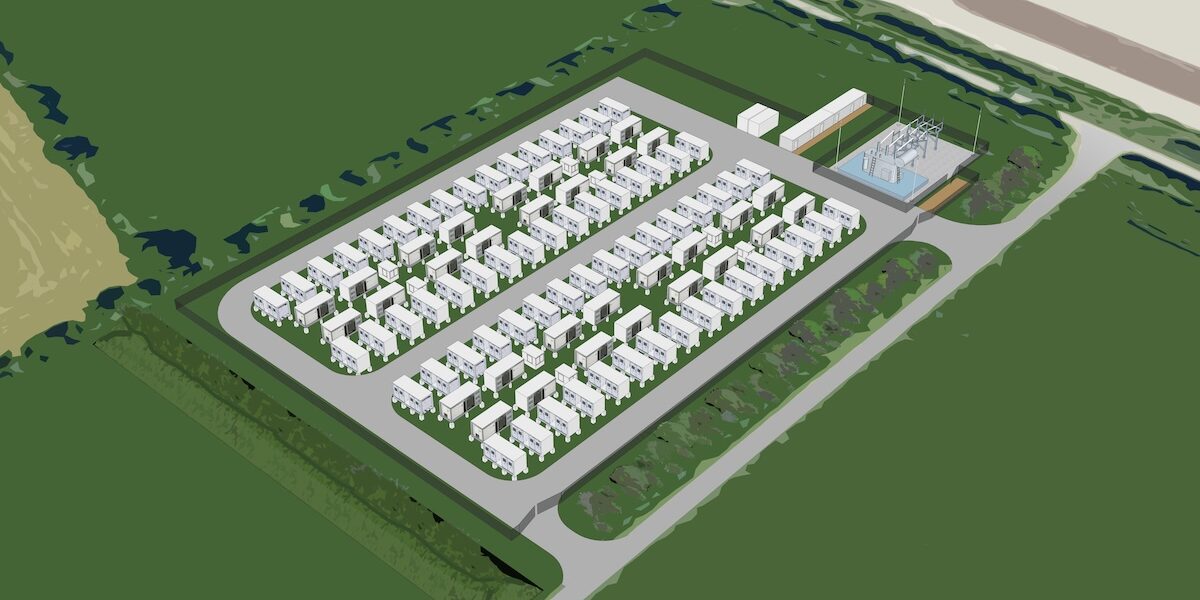
Why a German capacity market?
With the German Kraftwerksstrategie, which also includes the agreement of a technology-independent capacity market, the German government is focusing on ensuring a fully renewable electricity system. The capacity market uses long-term contracts for available generation capacity (paid in €/kW) to ensure that there is sufficient energy available at every hour of the year to meet demand even in rare exceptional cases. One thing is certain: with increasing shares of renewable energies and the coal phase-out, controllable generators and storage systems are needed to keep production and consumption in balance. A recently published study by Frontier Economics shows that battery storage can reduce the need for gas-fired power plants in Germany by 9 GW, saving billions in construction and operating costs for 18 additional power plants and emissions of up to 6.2 million tons of CO2.
International experience in Belgium, the UK, Poland and Italy
Capacity markets have been successfully introduced in various European countries in recent years. After the UK took the lead in 2014, central capacity markets have been implemented in Belgium, Italy, Poland and Ireland. In Spain, a capacity market is currently in the legislative process. In the EU, the Agency for the Cooperation of Energy Regulators (ACER) sets the framework for the use of capacity mechanisms, while the final decision on this rests with the Member States and the European Commission.
The design of the capacity markets in the various European countries is therefore subject to a similar structure: in a central annual auction, a fixed amount of capacity is demanded by a central authority, similar to the transmission system operator in the UK and Poland. This capacity can be offered, for example, by power plants, storage facilities or through demand response.
The capacity markets in the UK and Belgium, for example, follow this central principle (see table). In contrast, the French model, in which the capacity in demand is procured in a decentralized manner and in which the individual energy suppliers are obliged to purchase capacity certificates from power plants and other electricity producers, has not yet been able to establish itself.
The annual auctions take place four years (T-4) or one year (T-1) in advance of the start of the respective contract term. The term of the capacity contracts ranges from one year for existing plants to 15 to 17 years for new plants. This is meant to provide the latter with the necessary investment security over the financing period of the project.
During the term of the contract, all plants receive a fixed remuneration per megawatt per year based on the auction result. In return, they must be available during this period and are subject to certain physical or financial requirements depending on the structure of the respective market. Emission limits stipulate that coal-fired power plants and other plants with high CO2 emissions cannot participate in the capacity markets. This can also create incentives for natural gas power plants to switch to hydrogen.
Key points of a successful German capacity market
In order to avoid risks of mismanagement, misincentives and unnecessary costs, a well-thought-out and efficient capacity market design is essential. This can, for example, avoid the risk of so-called windfall profits going to power plants that do not need support or of power plants being artificially kept alive that would otherwise be eliminated from the market.
Experience from the capacity markets already implemented in Europe shows that the capacity market design to be created for Germany must take the following key aspects into account to be successful: firstly, the derating factor, secondly, the handling of plant availability and refinancing, and thirdly, the local distribution of the participating plants. The contract terms and auction horizons as well as options for mapping plant degradation and, finally, the choice of auction format between “pay-as-bid” or “pay-as-cleared” are also important.
Derating factor
The derating factor enables the participation of different generation and flexibility options in the capacity market. It indicates what percentage of the nominal output of a particular technology is remunerated by the capacity market and thus serves, for example, to make the contribution of battery storage systems with different storage durations to system security comparable. Depending on the capacity and the selected operating mode, a storage system can provide a given output for different lengths of time (for example 2 hours, 4 hours, 8 hours).
Determining derating factors should be based on how likely it is that a particular technology will be available during the most critical bottleneck hours of a year or quarter. In “mature” or well-established capacity markets such as MISO (Midcontinent Independent System Operator) in the USA, 4-hour batteries have been shown to be as reliable as gas or coal-fired power plants during the 3 percent (262 of 8,760) most critical bottleneck hours of a year, and have a derating factor of over 90%. The reason for this is that of the 262 most critical bottleneck hours, hardly more than 4 hours were consecutive, giving batteries time to recharge. In addition, batteries are less prone to failure than thermal power plants and have an availability advantage.

3.2 Plant availability and refinancing
A capacity market should not disrupt the actual energy trading. Therefore, it must be designed appropriately to ensure that there is no distorting interference with the cost-minimum dispatch (power plant deployment planning). Instead of a physical delivery obligation, we therefore propose leaving the actual dispatch to the price signals in the day-ahead and intraday markets. This way generation capacity can be offered exactly where the highest prices are traded – and thus automatically where the greatest demand is.
However, the capacity facility would always be obliged to be technically ready and able to deliver on timely call as soon as a bottleneck hour is announced – defined as exceeding a certain price threshold in the day-ahead market (this is the case in Belgium). This delivery readiness must be requested sufficiently early (day-ahead) so that, for example, storage systems can be filled beforehand. For storage systems, the readiness to deliver applies to a maximum of the “duration rating” of the capacity contract, i.e. for four consecutive hours for a storage system with a duration of 4 hours (4 hours of storage time).
The capacity payments remove the need for plant operators to generate contribution margins for the units in the merit order. It is therefore politically conceivable to use ‘Contracts for difference’ (Financial CfD) to skim off the difference amounts above the threshold price from the capacity market participants. If the day-ahead clearing price rises to 1,000 euros per megawatt hour, for example, at a threshold of 700 euros, the capacity plant must pay back 300 euros to the capacity market account regardless of physical production. In return, it receives the predictable monthly payments from the capacity market.
Although the capacity market would partially refinance itself in this way, there would still be a residual requirement for the monthly payments to the participating plants. The costs for this can be allocated in the grid charges, however, not across the board for all annual hours, but only for the most critical bottleneck hours for which the capacity plants were dimensioned and built in derating. This charging of bottleneck hours for all consumers – including industry – would also trigger price elasticity on the demand side and thus a reduction in demand, which in turn would mean that fewer generating plants would have to be put out to tender for the bottleneck hours.
3.3 Local distribution
With a suitable design of the capacity market, a spatial dimension of the energy transition in the context of security of supply must also be taken into account. Regional allocation signals could increase the efficiency of the overall system as incentives for the geographical management of the traded capacities. These signals, which are particularly relevant for new plants, should offer the possibility of being cyclically adjusted by grid operators to match current and future expected network loads.
One of several options for this would be to use pre-sequences to give preference to capacities required at a particular location using the merit order principle of the auction. Alternatively, capacities required at a location could be increased even further after an auction in which they were initially unsuccessful, although this approach is viewed rather critically by the EU Commission. Finally, the “multi-zone mechanism” (see Italy) follows an optimization approach in which market clearing takes place separately for different locations with different demand curves and supply regulations. However, this would probably also necessitate a division of the German day-ahead market into different price zones.
Another approach can be observed in Belgium, where an effective mechanism restricts the results of an optimisation phase of the auction. Certain combinations of bids that would overwhelm the grid as whole or that are not grid-compatible are rejected. In order to counteract the effects of limited competition at specific locations, measures to limit costs should also be considered and cross-border bids should be made possible. These approaches not only promote optimised site selection, but also the stability and reliability of the entire electricity grid and should therefore most certainly be taken into account.
3.4 Auction format: pay-as-bid or pay-as-cleared
The choice of auction mechanism in electricity markets is crucial to ensure efficiency as well as fair and competitive pricing. While the pay-as-bid system encourages bidders to submit their individual asking process and the contract is awarded at the price offered, the pay-as-cleared system offers a uniform price arrangement. In the pay-as-cleared system, all participants offer their prices, and the final award is set at the lowest price level at which supply still matches demand.
Although in theory both approaches should produce similar results, in practice this depends on certain conditions: a homogeneous product, sufficient competition and complete information are necessary. The German electricity market generally offers sufficient competition, and the tendered capacity represents a homogeneous product. However, there is a lack of complete information because the investment costs for new power plants are influenced by individual site conditions. Consequently, the pay-as-cleared system is to be preferred because the true costs are included in the bids of all suppliers and thus false incentives are minimized.
3.5 Contract terms and auction horizons
A time frame for the capacity market must be designed as a compromise between planning security and sufficient scope for adjustment. Two factors are crucial for the time frame: the auction horizon and the respective contract terms of the capacity agreements.
In other European countries, auction horizons of T-1 and T-4 or T-5 (i.e. one, four or five years before the start of the capacity obligation) have proven to be effective. A similar model could be conceivable for Germany, offering both planning certainty in the project planning phase and allowing for adjustments to provide capacity required at short notice. Low-cost battery storage systems can use their competitive advantage in the auction horizon T-4 with rapid availability in project planning. Mechanisms (e.g. financial collateral) should also be established to reduce the risk of immature projects (“paper projects”) that may not be completed in time for the start of the capacity obligation.
Longer terms should generally be favored for capacity contracts to secure investment costs. Ideally, the contract terms should correspond to the life cycles of assets such as power plants or battery storage systems. 10 to 15 years seem adequate to do justice to both the technical service life and the need for sufficient investment security. Here, too, it is worth taking a look at European examples: In Belgium, contract systems with terms of one year for existing plants and 15 years for new plants have been established, with the contract terms of a total of around 4.45 gigawatts being evenly divided between one-year and 15-year contracts in the auction period from 2025 to 2026.
3.6 Mapping of system degradation
Long contract terms, which can guarantee optimal security, also pose a technical challenge: degradation. Although batteries lose capacity over time and use, the contractually agreed capacity in megawatts and megawatt hours must be guaranteed. This is monitored through regular performance tests.
Various strategies can be used to ensure sufficient capacity is available despite degradation. In addition to over-dimensioning, where more than the contractually agreed capacity is installed at the beginning of the contract term, battery modules can also be replaced during the term (repowering) or new modules can be retrofitted (augmentation). Another option would be to enable the trading of capacity obligations on the secondary market, as in Belgium or Poland. With the secondary capacity market, Belgium has set up a market that allows operators to transfer parts of their capacity obligations to a pre-qualified candidate by means of a transaction; this does not have to be a plant of the same technology.
These strategies can make it possible to meet long-term obligations despite battery aging. However, they also have a limiting effect on potential revenues. Nevertheless, it is important to enable such mechanisms – also to ensure actual technology openness.
3.7 CO2 limits
To prevent the capacity market from making a pseudo-contribution to climate protection, only CO2-free/low-carbon plants should receive remuneration from the CRM. H2-ready power plants should also be able to bid but should only be remunerated once they have switched to 100 percent hydrogen. The availability obligations, on the other hand, apply from the start of the contract, i.e. even when natural gas is used.
4 Conclusion
The potential German capacity market is supposed to create the basis for a fully renewable electricity system by ensuring flexibility and backup capacity, particularly during dark doldrums. The focus is on a technology-neutral approach that promotes urgently needed investments in hydrogen power plants, battery storage and other technologies through long-term contracts, thus reducing dependence on extreme price peaks. International experience, particularly from the UK and Belgium, should serve as a model for the design of an effective capacity market in Germany and can therefore significantly shorten the implementation timeline. To this end, informed and balanced decisions must be made on factors such as derating, plant availability, local distribution, contract terms and CO2 limits to ensure the stability and cost efficiency of the German electricity grid.
About the authors
Johannes Müller is a member of the German Green Party and the Committee on Economic Affairs and Innovation and the Committee on Environment, Climate and Energy.
Kilian Leykam is responsible for Aquila Clean Energy’s storage investments in the EMEA region and has been working in the renewable energy sector since 2009. Before joining the Aquila Group in 2020, he was responsible for strategy and business development at Vattenfall Energy Trading.
Lennard Wilkening is co-founder and CEO of Suena, a software-based flexibility trading company that offers optimization and trading services for large-scale energy storage and renewable energies.
Elena Müller works as Founders Associate & Communications Manager at Suena, where she focuses on energy policy, the energy transition and the role of energy storage in the energy transition.






